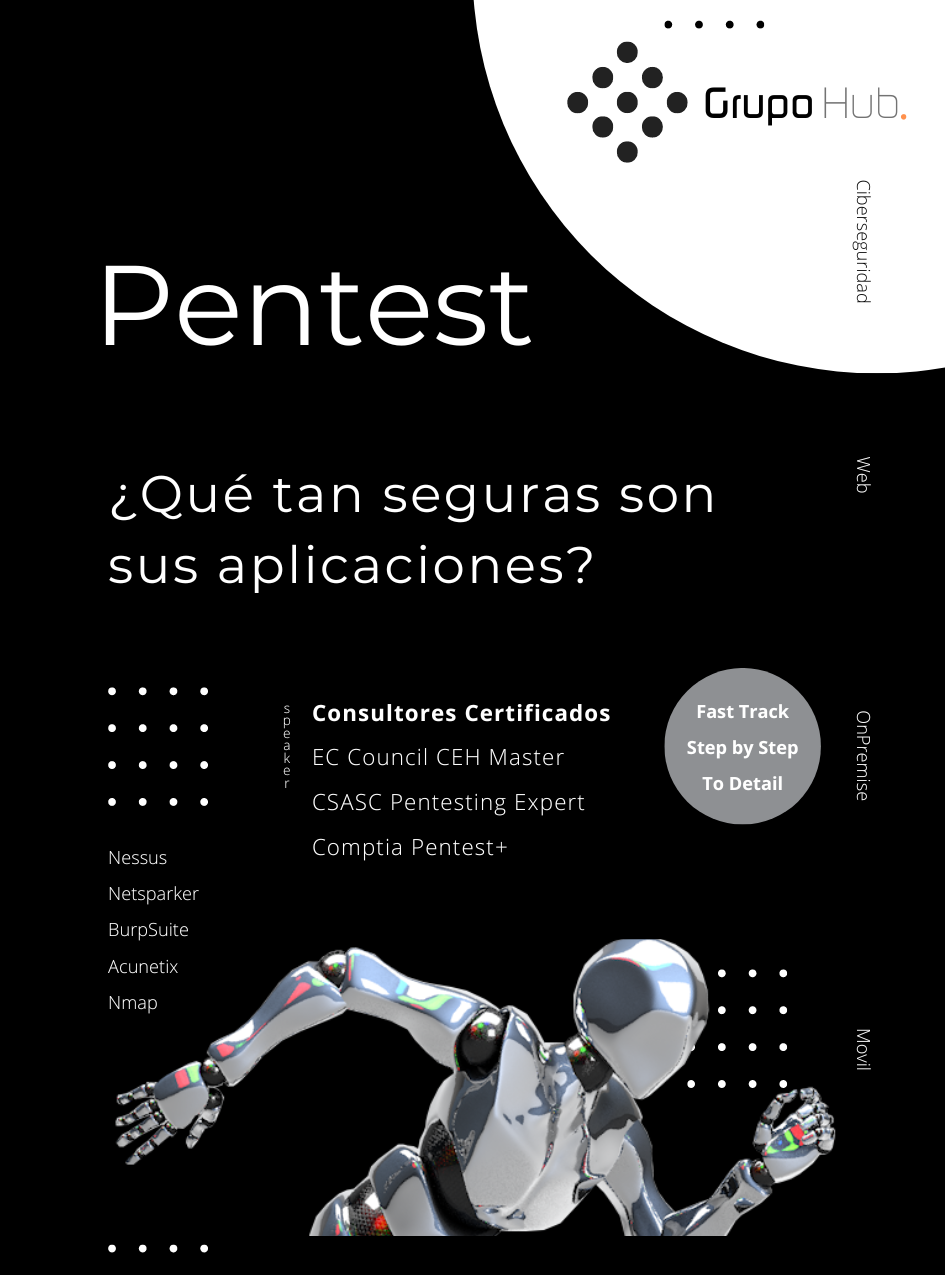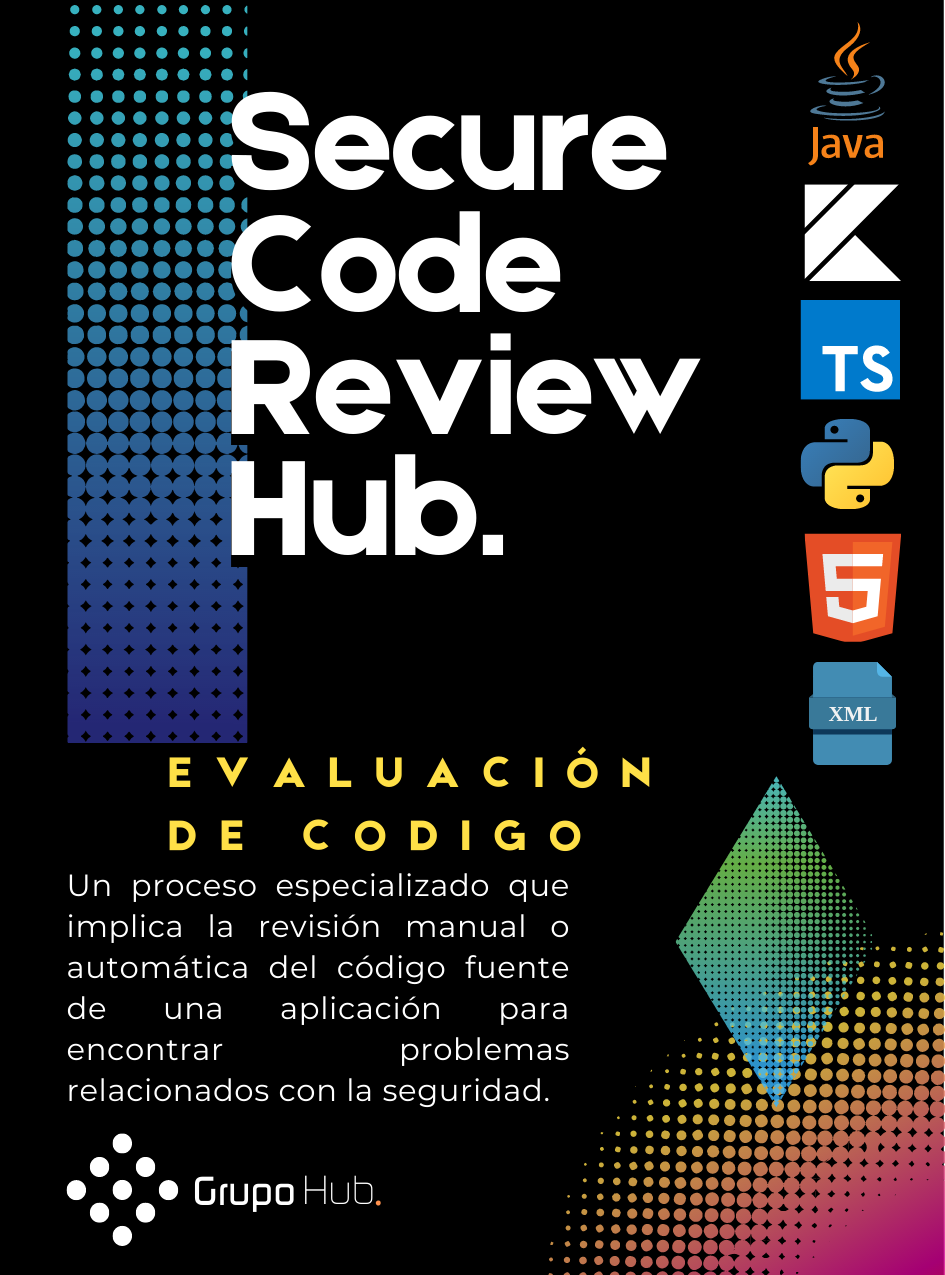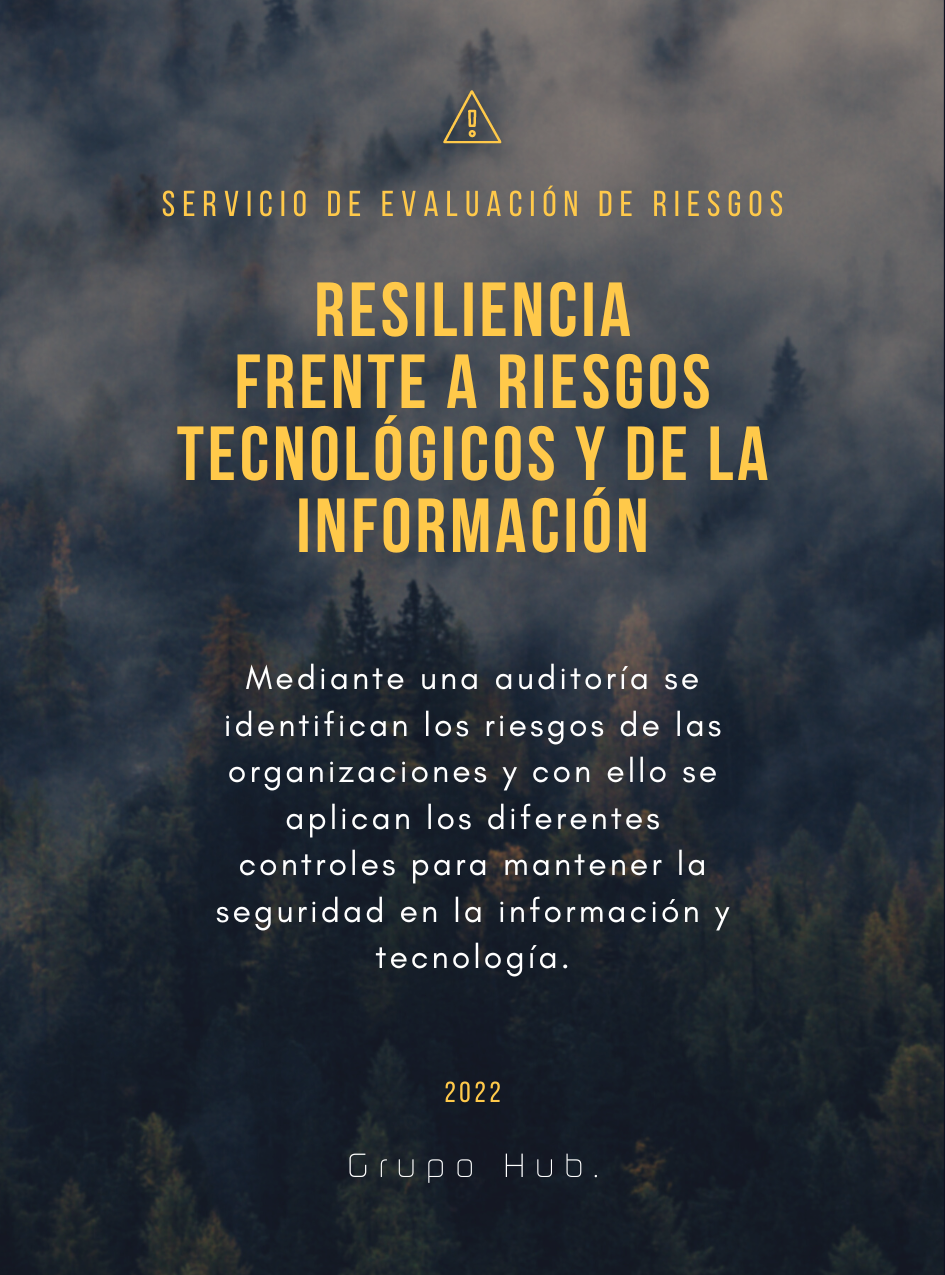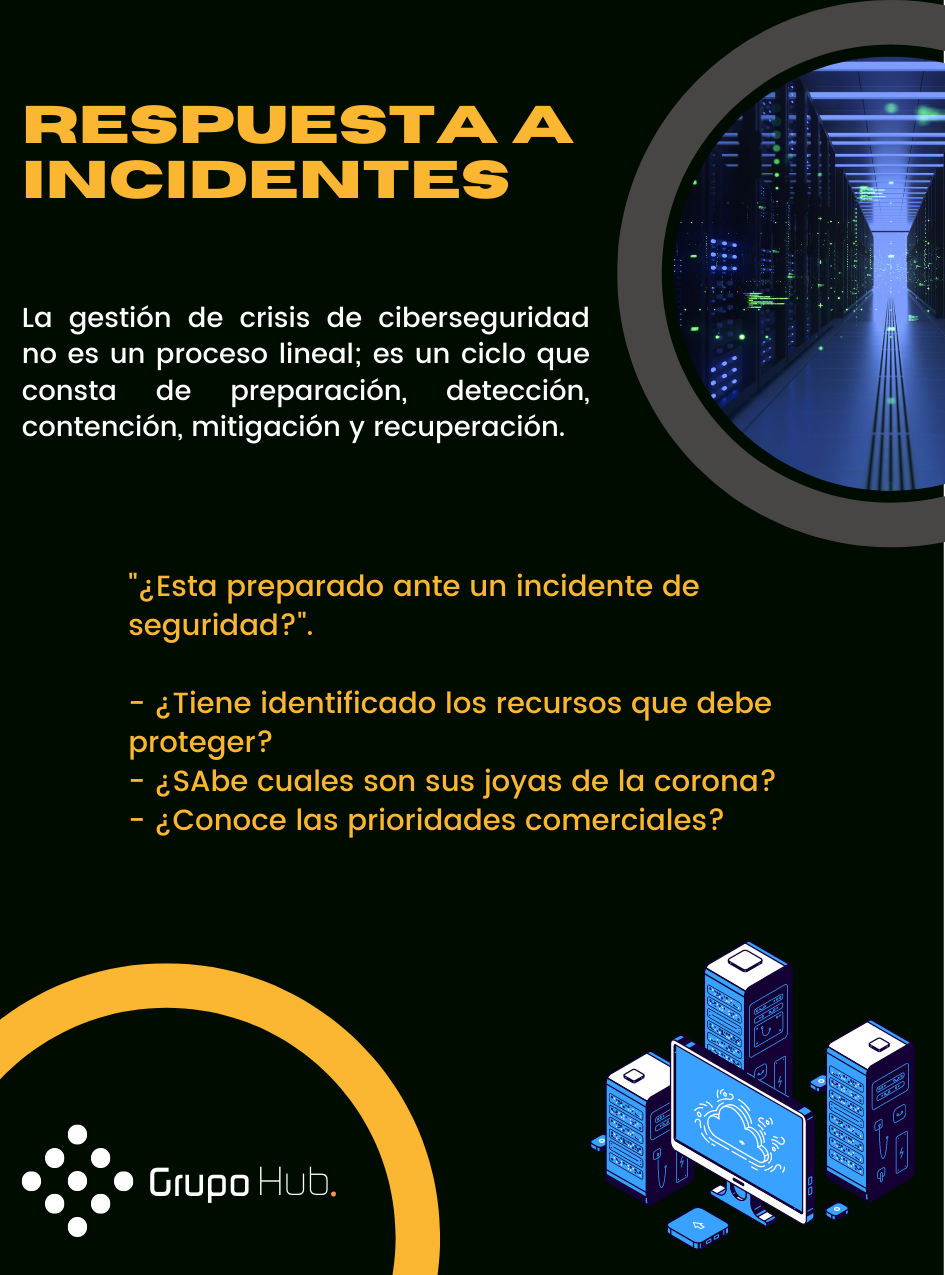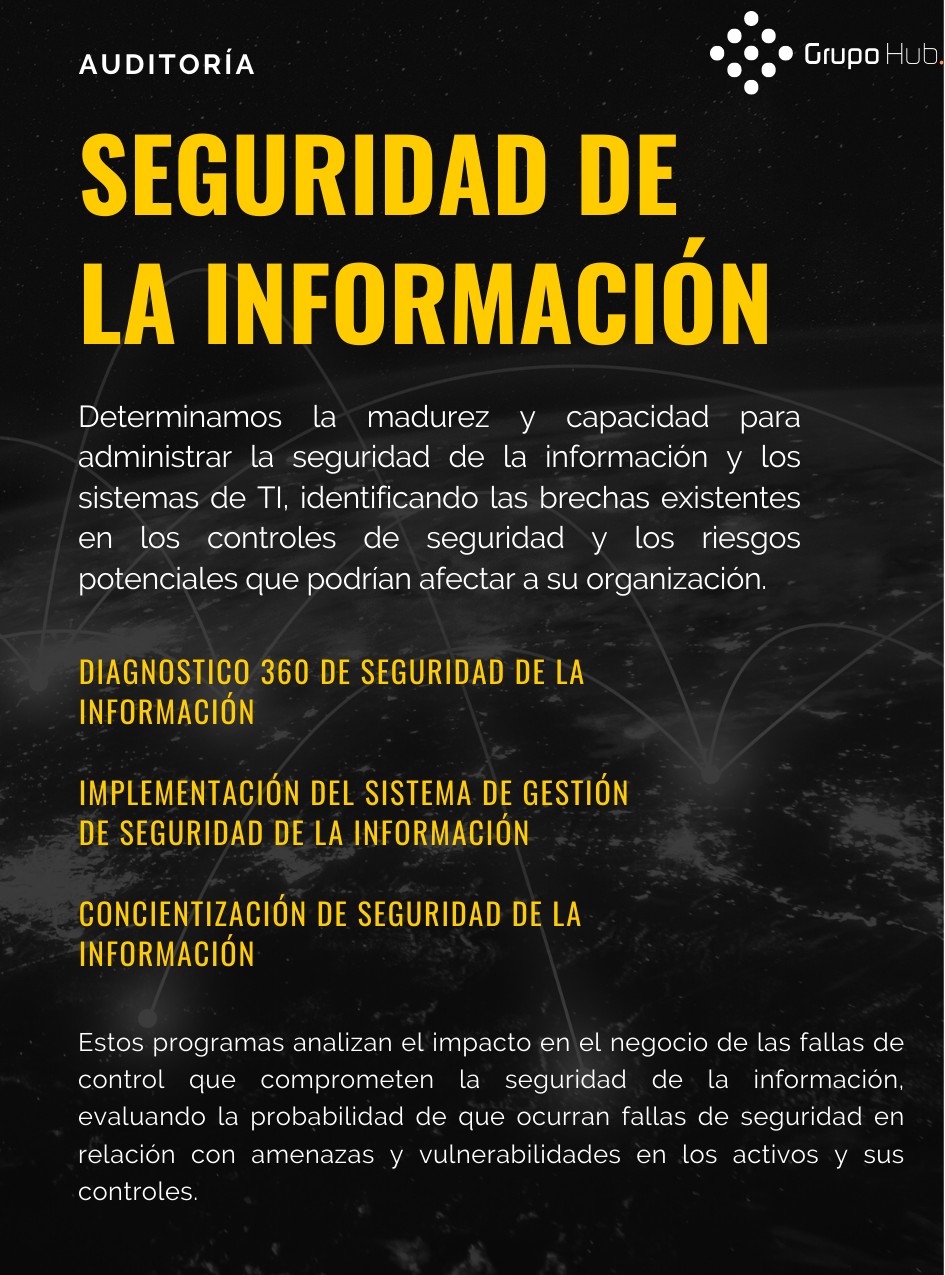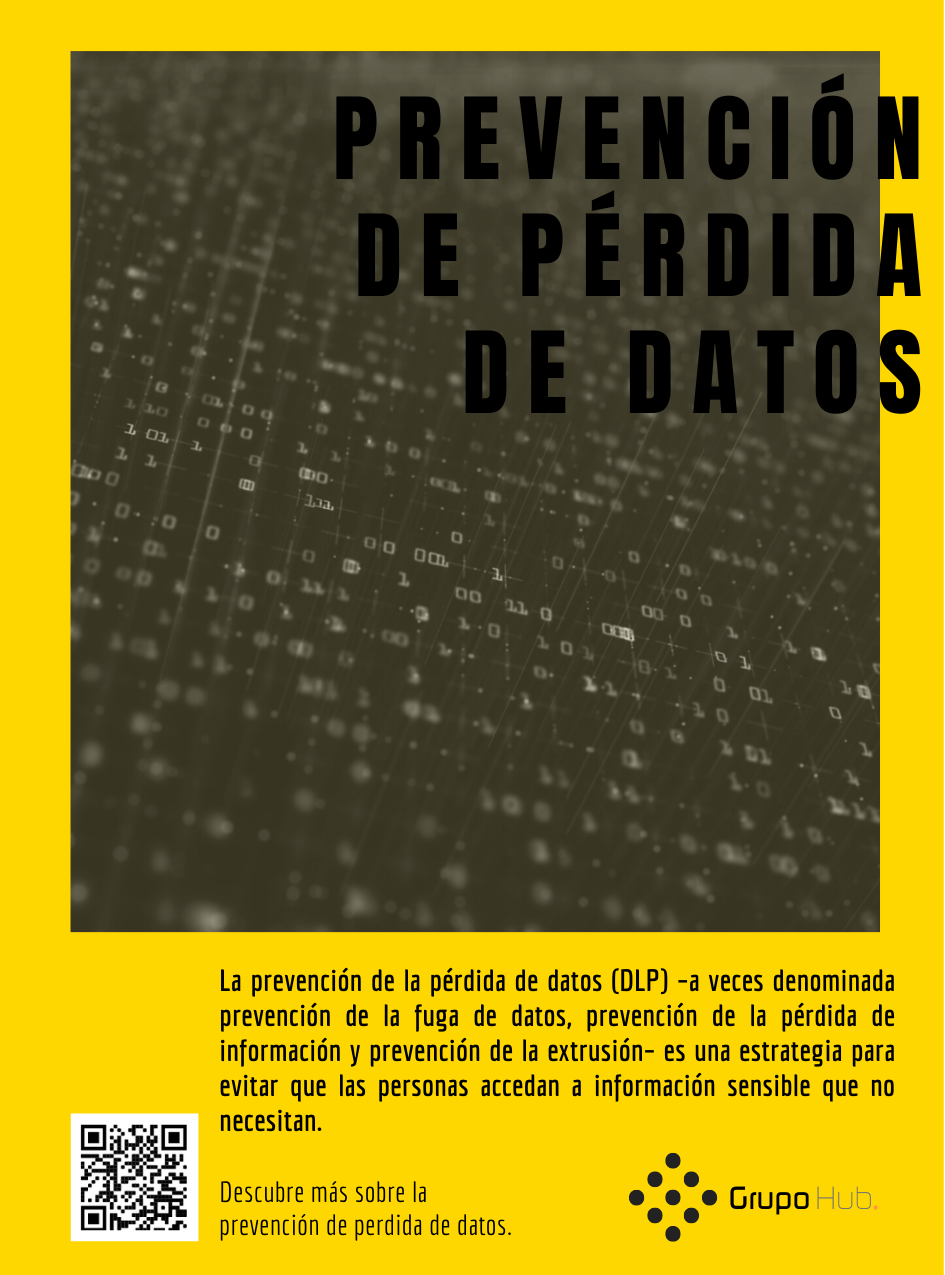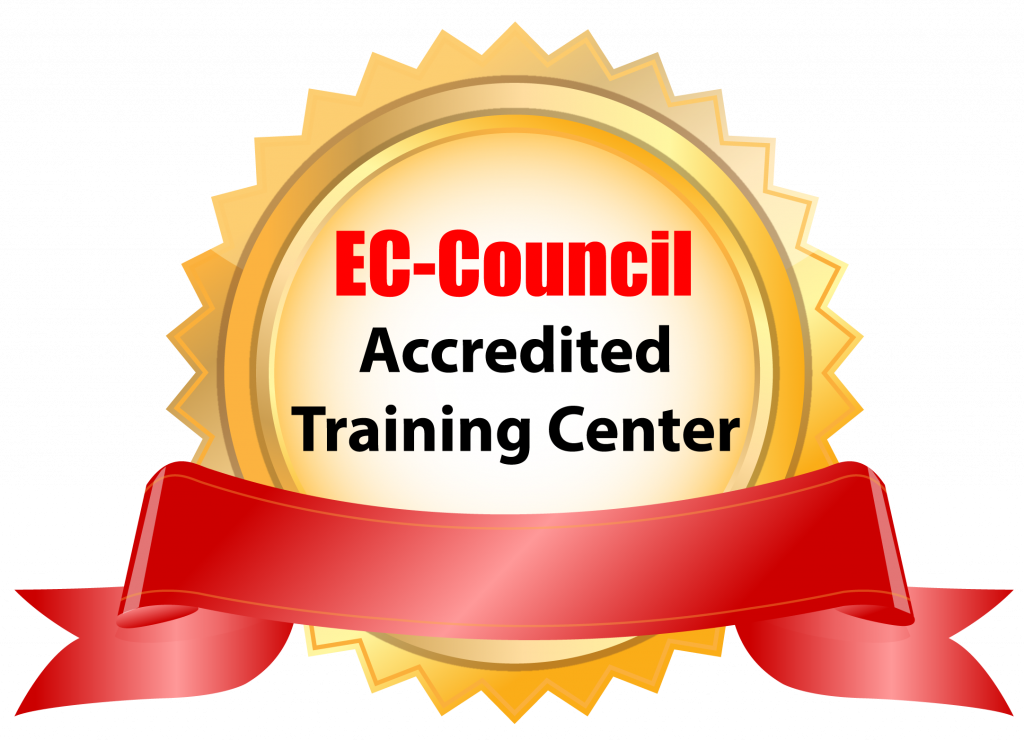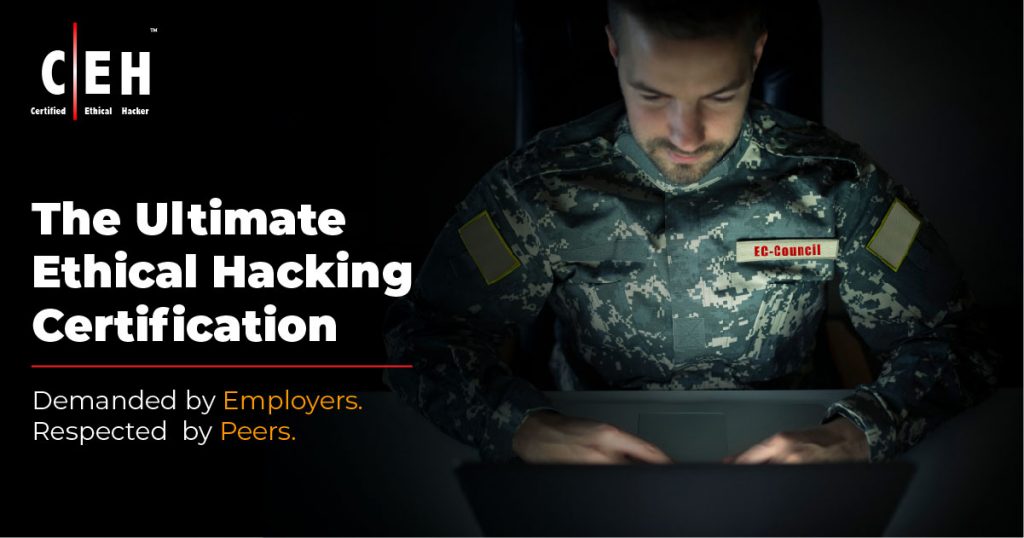El Programa de Director de Seguridad de la Información Certificado (CCISO, por sus siglas en inglés) de EC-Council cuenta con profesionales líderes en seguridad de la información certificados en todo el mundo. Un grupo central de ejecutivos de seguridad de la información de alto nivel, la Junta Asesora de CCISO, formó la base del programa y describió el contenido cubierto por el examen, el conjunto de conocimientos y la capacitación. Algunos miembros de la Junta contribuyeron como autores, otros como redactores de exámenes, otros como controles de calidad y otros como instructores. Cada segmento del programa se desarrolló teniendo en cuenta al CISO aspirante y actual y busca transferir el conocimiento de ejecutivos experimentados a la próxima generación de líderes en las áreas que son más críticas en el desarrollo y mantenimiento de un programa exitoso de seguridad de la información.
Beneficios del curso CCISO:
The CCISO Certification is an industry-leading, security certification program that recognizes the real-world experience necessary to succeed at the highest executive levels of information security. Bringing together all the components required for a C-Level position, the CCISO program combines audit management, governance, IS controls, human capital management, strategic program development, and the financial expertise vital to leading a highly successful information security program. The job of the CISO is far too important to be learned by trial and error. Executive-level management skills are not areas that should be learned on the job.
The material in the CCISO Program assumes a high-level understanding of technical topics and doesn’t spend much time on strictly technical information, but rather on the application of technical knowledge to an information security executive’s day-to-day work. The CCISO aims to bridge the gap between the executive management knowledge that CISOs need and the technical knowledge that many sitting and aspiring CISOs have. This can be a crucial gap as a practitioner endeavors to move from mid-management to upper, executive management roles. Much of this is traditionally learned as on the job training, but the CCISO Training Program can be the key to a successful transition to the highest ranks of information security management.
Requerimientos mínimos
Para calificar para rendir el examen CCISO sin tomar ninguna capacitación, los candidatos deben tener cinco años de experiencia en cada uno de los 5 dominios CCISO verificados a través de la solicitud de elegibilidad para el examen.
Para rendir el examen después de recibir capacitación, los candidatos deben tener cinco años de experiencia en tres de los cinco dominios CCISO verificados a través de la Solicitud de elegibilidad para el examen.
Las exenciones para el CCISO están disponibles para los candidatos de autoestudio
Ph.D. Information Security – 3 years, MS Information Security Management, MS Information Security Engineering – 2 years, BS Information Security – 2 years
Ph.D. Information Security – 3 years, MS Information Security Management, MS Information Security Engineering – 2 years, BS Information Security – 2 years
Ph.D. Information Security – 3 years, MS Information Security – 2 years, BS Information Security – 2 years
Ph.D. Information Security – 3 years, MS Information Security – 2 years, BS Information Security – 2 years
CPA, MBA, M. Fin. – 3 years
Sobre el examen
Hay tres niveles cognitivos evaluados en el examen CCISO, pero solo dos evaluados en el examen EISM:
Nivel 1 – Conocimiento: este nivel cognitivo de preguntas se utiliza para recordar hechos memorizados. Este es el nivel cognitivo más básico que rara vez se acepta en las certificaciones, ya que simplemente reconoce la capacidad del candidato para memorizar información. Se puede usar de manera efectiva cuando se solicitan definiciones básicas, estándares o cualquier hecho concreto. Este nivel aparece tanto en el examen CCISO como en el EISM.
Nivel 2 – aplicación: este nivel cognitivo de preguntas se utiliza para identificar la capacidad del candidato para comprender la aplicación de un concepto determinado. Se diferencia de las preguntas basadas en el conocimiento en el sentido de que requiere la comprensión y la aplicabilidad correcta de un concepto dado, no solo el concepto en sí. Este tipo de pregunta a menudo requiere contexto adicional antes de que la pregunta real se proporcione en la raíz. Este nivel aparece tanto en el examen CCISO como en el EISM.
Nivel 3 – Análisis: este nivel cognitivo de preguntas se utiliza para identificar la capacidad del candidato para identificar y resolver un problema dada una serie de variables y contexto. Las preguntas de análisis difieren mucho de las preguntas basadas en la aplicación en el sentido de que requieren no solo la aplicabilidad de un concepto, sino también cómo se puede usar un concepto, dada cierta restricción, para resolver un problema. Este nivel aparece en el CCISO y no en el examen EISM.
Puntaje de aprobación
Para mantener la alta integridad de nuestros exámenes de certificación, los exámenes del EC-Council se proporcionan en múltiples formas (es decir, diferentes bancos de preguntas). Cada formulario se analiza cuidadosamente a través de pruebas beta con un grupo de muestra apropiado bajo la supervisión de un comité de expertos en la materia que garantiza que cada uno de nuestros exámenes no solo tenga rigor académico sino que también tenga aplicabilidad en el «mundo real». También tenemos un proceso para determinar la calificación de dificultad de cada pregunta. La calificación individual luego contribuye a un «puntaje de corte» general para cada formulario de examen. Para garantizar que cada formulario tenga los mismos estándares de evaluación, los puntajes de corte se establecen «por formulario de examen». Según el formulario de examen que se cuestione, las puntuaciones de corte pueden oscilar entre el 60 % y el 78 %.
Exam Details
- Number of Questions: 150
- Test Duration: 2.5 Hours
- Test Format: Multiple Choice
- Test Delivery: ECC Exam Portal
Esquema del curso
Domain 1: Governance and Risk Management
1. Define, Implement, Manage, and Maintain an Information Security Governance Program
- 1.1. Form of Business Organization
- 1.2. Industry
- 1.3. Organizational Maturity
2. Information Security Drivers
- 3. Establishing an information security management structure
- 3.1. Organizational Structure
- 3.2. Where does the CISO fit within the organizational structure
- 3.3. The Executive CISO
- 3.4. Nonexecutive CISO
4. Laws/Regulations/Standards as drivers of Organizational Policy/Standards/Procedures
5. Managing an enterprise information security compliance program
- 5.1. Security Policy
- 5.1.1. Necessity of a Security Policy
- 5.1.2. Security Policy Challenges
- 5.2. Policy Content
- 5.2.1. Types of Policies
- 5.2.2. Policy Implementation
- 5.3. Reporting Structure
- 5.4. Standards and best practices
- 5.5. Leadership and Ethics
- 5.6. EC-Council Code of Ethics
6. Introduction to Risk Management
- 3.1. Organizational Structure
- 3.2. Where does the CISO fit within the organizational structure
- 3.3. The Executive CISO
- 3.4. Nonexecutive CISO
Domain 2: Information Security Controls, Compliance, and Audit Management
1. Information Security Controls
- 1.1. Identifying the Organization’s Information Security Needs
- 1.1.1. Identifying the Optimum Information Security Framework
- 1.1.2. Designing Security Controls
- 1.1.3. Control Lifecycle Management
- 1.1.4. Control Classification
- 1.1.5. Control Selection and Implementation
- 1.1.6. Control Catalog
- 1.1.7. Control Maturity
- 1.1.8. Monitoring Security Controls
- 1.1.9. Remediating Control Deficiencies
- 1.1.10. Maintaining Security Controls
- 1.1.11. Reporting Controls
- 1.1.12. Information Security Service Catalog
2. Compliance Management
- 2.1. Acts, Laws, and Statutes
- 2.1.1. FISMA
- 2.2. Regulations
- 2.2.1. GDPR
- 2.3. Standards
- 2.3.1. ASD—Information Security Manual
- 2.3.2. Basel III
- 2.3.3. FFIEC
- 2.3.4. ISO 00 Family of Standards
- 2.3.5. NERC-CIP
- 2.3.6. PCI DSS
- 2.3.7. NIST Special Publications
- 2.3.8. Statement on Standards for Attestation Engagements No. 16 (SSAE 16)
3. Guidelines, Good and Best Practices
- 3.1. CIS
- 3.1.1. OWASP
4. Audit Management
- 4.1. Audit Expectations and Outcomes
- 4.2. IS Audit Practices
- 4.2.1. ISO/IEC Audit Guidance
- 4.2.2. Internal versus External Audits
- 4.2.3. Partnering with the Audit Organization
- 4.2.4. Audit Process
- 4.2.5. General Audit Standards
- 4.2.6. Compliance-Based Audits
- 4.2.7. Risk-Based Audits
- 4.2.8. Managing and Protecting Audit Documentation
- 4.2.9. Performing an Audit
- 4.2.10. Evaluating Audit Results and Report
- 4.2.11. Remediating Audit Findings
- 4.2.12. Leverage GRC Software to Support Audits
5. Summary
Domain 3: Security Program Management & Operations
1. Program Management
- 1.1. Defining a Security Charter, Objectives, Requirements, Stakeholders, and Strategies
- 1.1.1. Security Program Charter
- 1.1.2. Security Program Objectives
- 1.1.3. Security Program Requirements
- 1.1.4. Security Program Stakeholders
- 1.1.5. Security Program Strategy Development
- 1.2. Executing an Information Security Program
- 1.3. Defining and Developing, Managing and Monitoring the Information Security Program
- 1.3.1. Defining an Information Security Program Budget
- 1.3.2. Developing an Information Security Program Budget
- 1.3.3. Managing an Information Security Program Budget
- 1.3.4. Monitoring an Information Security Program Budget
- 1.4. Defining and Developing Information Security Program Staffing Requirements
- 1.5. Managing the People of a Security Program
- 1.5.1. Resolving Personnel and Teamwork Issues
- 1.5.2. Managing Training and Certification of Security Team Members
- 1.5.3. Clearly Defined Career Path
- 1.5.4. Designing and Implementing a User Awareness Program
- 1.6. Managing the Architecture and Roadmap of the Security Program
- 1.6.1. Information Security Program Architecture
- 1.6.2. Information Security Program Roadmap
- 1.7. Program Management and Governance
- 1.7.1. Understanding Project Management Practices
- 1.7.2. Identifying and Managing Project Stakeholders
- 1.7.3. Measuring the Effectives of Projects
- 1.8. Business Continuity Management (BCM) and Disaster Recovery Planning (DRP)
- 1.9. Data Backup and Recovery
- 1.10. Backup Strategy
- 1.11. ISO BCM Standards
- 1.11.1. Business Continuity Management (BCM)
- 1.11.2. Disaster Recovery Planning (DRP)
- 1.12. Continuity of Security Operations
- 1.12.1. Integrating the Confidentiality, Integrity and Availability (CIA) Model
- 1.13. BCM Plan Testing
- 1.14. DRP Testing
- 1.15. Contingency Planning, Operations, and Testing Programs to Mitigate Risk and Meet Service Level Agreements (SLAs)
- 1.16. Computer Incident Response
- 1.16.1. Incident Response Tools
- 1.16.2. Incident Response Management
- 1.16.3. Incident Response Communications
- 1.16.4. Post-Incident Analysis
- 1.16.5. Testing Incident Response Procedures
- 1.17. Digital Forensics
- 1.17.1. Crisis Management
- 1.17.2. Digital Forensics Life Cycle
2. Operations Management
- 2.1. Establishing and Operating a Security Operations (SecOps) Capability
- 2.2. Security Monitoring and Security Information and Event Management (SIEM)
- 2.3. Event Management
- 2.4. Incident Response Model
- 2.4.1. Developing Specific Incident Response Scenarios
- 2.5. Threat Management
- 2.6. Threat Intelligence
- 2.6.1. Information Sharing and Analysis Centers (ISAC)
- 2.7. Vulnerability Management
- 2.7.1. Vulnerability Assessments
- 2.7.2. Vulnerability Management in Practice
- 2.7.3. Penetration Testing
- 2.7.4. Security Testing Teams
- 2.7.5. Remediation
- 2.8. Threat Hunting
3. Summary
Domain 4: Information Security Core Competencies
1. Access Control
- 1.1. Authentication, Authorization, and Auditing
- 1.2. Authentication
- 1.3. Authorization
- 1.4. Auditing
- 1.5. User Access Control Restrictions
- 1.6. User Access Behavior Management
- 1.7. Types of Access Control Models
- 1.8. Designing an Access Control Plan
- 1.9. Access Administration
2. Physical Security
- 2.1. Designing, Implementing, and Managing Physical Security Program
- 2.1.1. Physical Risk Assessment
- 2.2. Physical Location Considerations
- 2.3. Obstacles and Prevention
- 2.4. Secure Facility Design
- 2.4.1. Security Operations Center
- 2.4.2. Sensitive Compartmented Information Facility
- 2.4.3. Digital Forensics Lab
- 2.4.4. Datacenter
- 2.5. Preparing for Physical Security Audits
3. Network Security
- 3.1. Network Security Assessments and Planning
- 3.2. Network Security Architecture Challenges
- 3.3. Network Security Design
- 3.4. Network Standards, Protocols, and Controls
- 3.4.1. Network Security Standards
- 3.4.2. Protocols
4. Certified Chief
- 4.1.1. Network Security Controls
- 4.2. Wireless (Wi-Fi) Security
- 4.2.1. Wireless Risks
- 4.2.2. Wireless Controls
- 4.3. Voice over IP Security
5. Endpoint Protection
- 5.1. Endpoint Threats
- 5.2. Endpoint Vulnerabilities
- 5.3. End User Security Awareness
- 5.4. Endpoint Device Hardening
- 5.5. Endpoint Device Logging
- 5.6. Mobile Device Security
- 5.6.1. Mobile Device Risks
- 5.6.2. Mobile Device Security Controls
- 5.7. Internet of Things Security (IoT)
- 5.7.1. Protecting IoT Devices
6. Application Security
- 6.1. Secure SDLC Model
- 6.2. Separation of Development, Test, and Production Environments
- 6.3. Application Security Testing Approaches
- 6.4. DevSecOps
- 6.5. Waterfall Methodology and Security
- 6.6. Agile Methodology and Security
- 6.7. Other Application Development Approaches
- 6.8. Application Hardening
- 6.9. Application Security Technologies
- 6.10. Version Control and Patch Management
- 6.11. Database Security
- 6.12. Database Hardening
- 6.13. Secure Coding Practices
7. Encryption Technologies
- 7.1. Encryption and Decryption
- 7.2. Cryptosystems
- 7.2.1. Blockchain
- 7.2.2. Digital Signatures and Certificates
- 7.2.3. PKI
- 7.2.4. Key Management
- 7.3. Hashing
- 7.4. Encryption Algorithms
- 7.5. Encryption Strategy Development
- 7.5.1. Determining Critical Data Location and Type
- 7.5.2. Deciding What to Encrypt
- 7.5.3. Determining Encryption Requirements
- 7.5.4. Selecting, Integrating, and Managing Encryption Technologies
8. Virtualization Security
- 8.1. Virtualization Overview
- 8.2. Virtualization Risks
- 8.3. Virtualization Security Concerns
- 8.4. Virtualization Security Controls
- 8.5. Virtualization Security Reference Model
9. Cloud Computing Security
- 9.1. Overview of Cloud Computing
- 9.2. Security and Resiliency Cloud Services
- 9.3. Cloud Security Concerns
- 9.4. Cloud Security Controls
- 9.5. Cloud Computing Protection Considerations
10. Transformative Technologies
- 10.1. Artificial Intelligence
- 10.2. Augmented Reality
- 10.3. Autonomous SOC
- 10.4. Dynamic Deception
- 10.5. Software-Defined Cybersecurity
11. Summary
Domain 5: Strategic Planning, Finance, Procurement and Vendor Management
1. Strategic Planning
- 1.1. Understanding the Organization
- 1.1.1. Understanding the Business Structure
- 1.1.2. Determining and Aligning Business and Information Security Goals
- 1.1.3. Identifying Key Sponsors, Stakeholders, and Influencers
- 1.1.4. Understanding Organizational Financials
- 1.2. Creating an Information Security Strategic Plan
- 1.2.1. Strategic Planning Basics
- 1.2.2. Alignment to Organizational Strategy and Goals
- 1.2.3. Defining Tactical Short, Medium, and Long-Term Information Security Goals
- 1.2.4. Information Security Strategy Communication
- 1.2.5. Creating a Culture of Security
2. Designing, Developing, and Maintaining an Enterprise Information Security Program
- 2.1. Ensuring a Sound Program Foundation
- 2.2. Architectural Views
- 2.3. Creating Measurements and Metrics
- 2.4. Balanced Scorecard
- 2.5. Continuous Monitoring and Reporting Outcomes
- 2.6. Continuous Improvement
- 2.7. Information Technology Infrastructure Library (ITIL) Continual Service Improvement (CSI)
3. Understanding the Enterprise Architecture (EA)
- 3.1. EA Types
- 3.1.1. The Zachman Framework
- 3.1.2. The Open Group Architecture Framework (TOGAF)
- 3.1.3. Sherwood Applied Business Security Architecture (SABSA)
- 3.1.4. Federal Enterprise Architecture Framework (FEAF)
4. Finance
- 4.1. Understanding Security Program Funding
- 4.2. Analyzing, Forecasting, and Developing a Security Budget
- 4.2.1. Resource Requirements
- 4.2.2. Define Financial Metrics
- 4.2.3. Technology Refresh
- 4.2.4. New Project Funding
- 4.2.5. Contingency Funding
- 4.3. Managing the information Security Budget
- 4.3.1. Obtain Financial Resources
- 4.3.2. Allocate Financial Resources
- 4.3.3. Monitor and Oversight of Information Security Budget
- 4.3.4. Report Metrics to Sponsors and Stakeholders
- 4.3.5. Balancing the Information Security Budget
5. Procurement
- 5.1. Procurement Program Terms and Concepts
- 5.1.1. Statement of Objectives (SOO)
- 5.1.2. Statement of Work (SOW)
- 5.1.3. Total Cost of Ownership (TCO)
- 5.1.4. Request for Information (RFI)
- 5.1.5. Request for Proposal (RFP)
- 5.1.6. Master Service Agreement (MSA)
- 5.1.7. Service Level Agreement (SLA)
- 5.1.8. Terms and Conditions (T&C)
- 5.2. Understanding the Organization’s Procurement Program
- 5.2.1. Internal Policies, Processes, and Requirements
- 5.2.2. External or Regulatory Requirements
- 5.2.3. Local Versus Global Requirements
- 5.3. Procurement Risk Management
- 5.3.1. Standard Contract Language
6. Vendor Management
- 6.1. Understanding the Organization’s Acquisition Policies and Procedures
- 6.1.1. Procurement Life cycle
- 6.2. Applying Cost-Benefit Analysis (CBA) During the Procurement Process5
- 6.3. Vendor Management Policies
- 6.4. Contract Administration Policies
- 6.4.1. Service and Contract Delivery Metrics
- 6.4.2. Contract Delivery Reporting
- 6.4.3. Change Requests
- 6.4.4. Contract Renewal
- 6.4.5. Contract Closure
- 6.5. Delivery Assurance
- 6.5.1. Validation of Meeting Contractual Requirements
- 6.5.2. Formal Delivery Audits
- 6.5.3. Periodic Random Delivery Audits
- 6.5.4. Third-Party Attestation Services (TPRM)
7. Summary
Piensa en TI
Piensa en Capacitación

